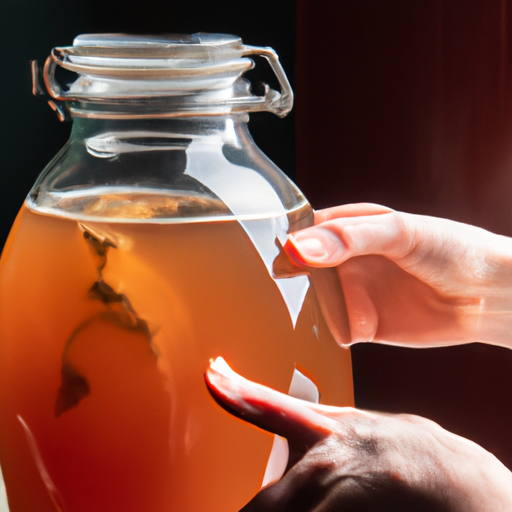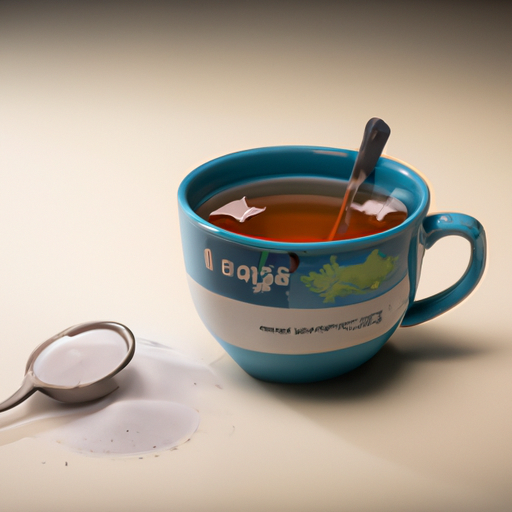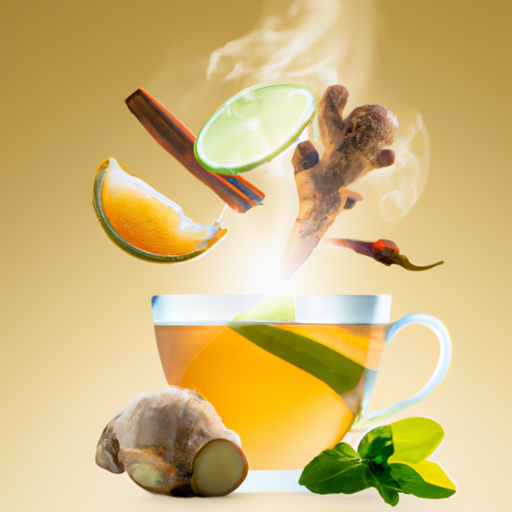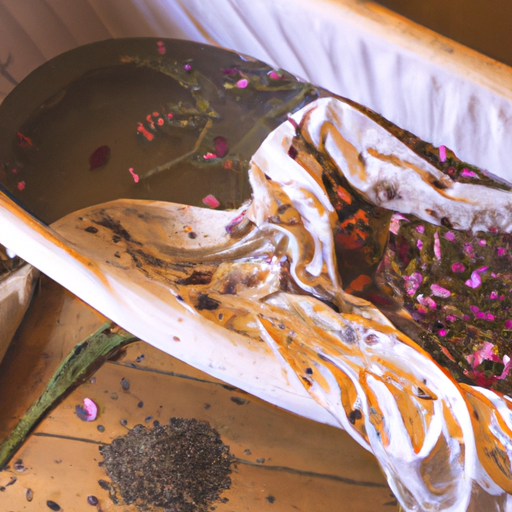It is often said that patience is a virtue and this certainly holds true when it comes to making kombucha with herbal tea. The wait may be long, but the end result is truly worth every moment of anticipation.
As an avid kombucha lover and herbal tea enthusiast, I’ve discovered the perfect recipe for creating a delicious and refreshing homemade herbal tea kombucha.
In this article, I’ll guide you through the step-by-step process of making kombucha with herbal tea. From gathering your supplies to enjoying the final product, I’ll share all the tips and tricks you need to know.
We’ll brew the herbal tea, add the SCOBY and starter liquid, and let the fermentation process work its magic. And if you’re feeling adventurous, I’ll even show you how to take it a step further with a secondary fermentation.
So, grab your favorite herbal tea blend and get ready to embark on a kombucha-making journey like no other. Get ready to savor the unique flavors and countless health benefits of homemade herbal tea kombucha. Let’s get started!
Key Takeaways
- Making kombucha with herbal tea requires patience and anticipation.
- The fermentation process takes about seven to ten days and converts sugars into beneficial acids, vitamins, and enzymes.
- Bottling should be done in glass bottles with tight-fitting lids to maintain carbonation and flavor.
- Homemade kombucha is a probiotic-rich and gut-healthy beverage.
Gather Your Supplies
Now it’s time to gather all the supplies you’ll need to embark on this exciting kombucha-making adventure!
First and foremost, you’ll need a large glass jar or container, preferably one that can hold at least a gallon of liquid. Make sure it’s clean and sterilized to create the perfect environment for your kombucha to ferment.
You’ll also need a breathable cover like a cheesecloth or coffee filter to allow air to circulate while keeping out any unwanted contaminants. Don’t forget to grab a rubber band to secure the cover in place.
Next, you’ll need a starter culture, also known as a SCOBY, which stands for Symbiotic Culture of Bacteria and Yeast. This is what kickstarts the fermentation process. You can either buy a SCOBY online or get one from a friend who already makes kombucha.
Lastly, gather your herbal tea of choice. Make sure it’s organic and free from any oils or additives that could harm the SCOBY.
With all your supplies ready, it’s time to brew your herbal tea and get started on making your own delicious kombucha!
Brew Your Herbal Tea
First, you’ll want to steep your favorite blend of fragrant herbs in hot water to create a deliciously aromatic base for your homemade kombucha. Choose herbs like chamomile, lavender, or hibiscus for a unique and flavorful twist. To brew your herbal tea, simply bring water to a boil and pour it over the herbs in a heat-resistant container. Let the mixture steep for about 10 minutes, or until the water takes on the desired flavor. Once steeped, strain the herbs from the liquid using a fine-mesh strainer or cheesecloth. Now, you have a fragrant and flavorful herbal tea ready to be transformed into kombucha. Next, we’ll move on to adding the scoby and starter liquid to begin the fermentation process.
Add the SCOBY and Starter Liquid
Once you’ve brewed your fragrant herbal infusion, it’s time to introduce the SCOBY and a generous amount of starter liquid. This kicks off the fermentation process with a symbiotic dance of microorganisms. Gently place the SCOBY (Symbiotic Culture of Bacteria and Yeast) on top of the cooled tea, making sure it’s fully submerged. The SCOBY acts as a home for the microorganisms that will transform your tea into delicious kombucha.
Next, pour in a generous amount of starter liquid, which is the previously fermented kombucha that helps to lower the pH and prevent harmful bacteria growth. This liquid also provides the necessary nutrients for the SCOBY to thrive.
Now, cover the vessel with a tightly woven cloth or a coffee filter secured with a rubber band. This allows airflow while protecting your kombucha from contaminants.
With the SCOBY and starter liquid in place, the fermentation process can begin, and the magic of kombucha making unfolds.
Fermentation Process
As the SCOBY and starter liquid come together, a fascinating transformation occurs. The microorganisms perform their symbiotic dance and work their magic to turn the fragrant infusion into a delicious and healthful beverage. The fermentation process is where the true alchemy happens.
Over the course of about seven to ten days, the microorganisms consume the sugars present in the tea and convert them into beneficial acids, vitamins, and enzymes. This process creates a slightly tangy and effervescent drink, known as kombucha. It’s important to monitor the fermentation progress by taste-testing daily, as the flavor will evolve and become more acidic over time.
Once the desired taste is achieved, it’s time to bottle the kombucha and enjoy the fruits of your labor.
Taste and Bottle
After the fermentation process, you’ll be delighted by the unique and tantalizing flavor of your homemade kombucha, which is ready to be bottled and savored. The taste of kombucha can vary depending on the type of herbal tea you used and the length of the fermentation process.
You may notice a pleasant tanginess with a hint of sweetness and a slight effervescence. The flavors of the herbal tea will shine through, adding a subtle depth to the overall taste.
Now, it’s time to bottle your kombucha to enjoy its refreshing goodness. Make sure to use glass bottles with tight-fitting lids to prevent any air from entering. This will help maintain the carbonation and flavor.
In the subsequent section about secondary fermentation (optional), you can further enhance the taste of your kombucha by adding fruits or herbs for an extra burst of flavor.
Secondary Fermentation (Optional)
To take your homemade kombucha to the next level, why not try a secondary fermentation? This optional step allows for additional flavors to develop and gives your kombucha a fizzy carbonation that’s reminiscent of store-bought varieties.
After the initial fermentation process, transfer your kombucha into airtight bottles, leaving about an inch of headspace. You can add various fruits, herbs, or spices to infuse different flavors into your brew. Seal the bottles tightly and let them sit at room temperature for 1 to 3 days. This’ll allow the carbonation to build up.
Once the desired level of carbonation is reached, refrigerate the bottles to halt the fermentation process. Now that your kombucha’s ready, you can enjoy your homemade herbal tea kombucha with a refreshing and unique twist.
Enjoy Your Homemade Herbal Tea Kombucha
Now that you’ve completed the secondary fermentation process, it’s time to sit back, relax, and enjoy the fruits of your labor – your very own homemade herbal tea kombucha!
This final step is where all the magic comes together, resulting in a delicious and refreshing beverage that you can proudly serve to friends and family.
To enjoy your kombucha, start by choosing your favorite glass or jar to pour it into. Slowly pour the kombucha, taking care not to disturb the sediment at the bottom. You’ll notice a pleasant fizz and a tangy, slightly sweet taste. Feel free to add ice cubes or a slice of lemon or lime to enhance the experience.
Whether you choose to savor it on its own or pair it with a meal, your homemade herbal tea kombucha is sure to be a hit. So sit back, take a sip, and revel in the satisfaction of creating your very own probiotic-rich, gut-healthy beverage. Cheers!
Frequently Asked Questions
Can I use any type of herbal tea to make kombucha?
Yes, you can use any type of herbal tea to make kombucha. For example, I once used chamomile tea and it resulted in a delightful and calming flavor. The possibilities are endless!
How long does it take for the SCOBY to form?
The formation of a scoby can take anywhere from 7 to 14 days, depending on various factors such as temperature and the strength of the tea used. It is important to be patient and allow the scoby to fully develop before proceeding with making kombucha.
Is it possible to over-ferment kombucha?
Yes, it is possible to over-ferment kombucha. When left for too long, the beneficial bacteria and yeasts consume all the sugar, resulting in a vinegar-like taste. It’s important to taste regularly and stop fermentation when desired flavor is achieved.
Can I reuse the SCOBY for multiple batches of kombucha?
Yes, you can reuse the SCOBY for multiple batches of kombucha. In fact, I have been using the same SCOBY for over a year now, and it continues to produce delicious and healthy kombucha.
What are some common signs of contamination during fermentation?
Some common signs of contamination during fermentation include mold growth on the surface of the kombucha, unusual colors or textures, foul or off-putting odors, and a sour taste that is more intense than usual.
Conclusion
In conclusion, making kombucha with herbal tea is a rewarding and visually captivating process. As I taste the tangy and effervescent homemade brew, I can’t help but imagine the vibrant colors of the herbs infusing the tea, creating a captivating kaleidoscope of flavors.
The SCOBY, like a living work of art, transforms the liquid into a bubbly elixir that dances on my tongue. With each sip, I am transported to a world of wellness and creativity, knowing that I’ve crafted something truly unique and beneficial for my body.










